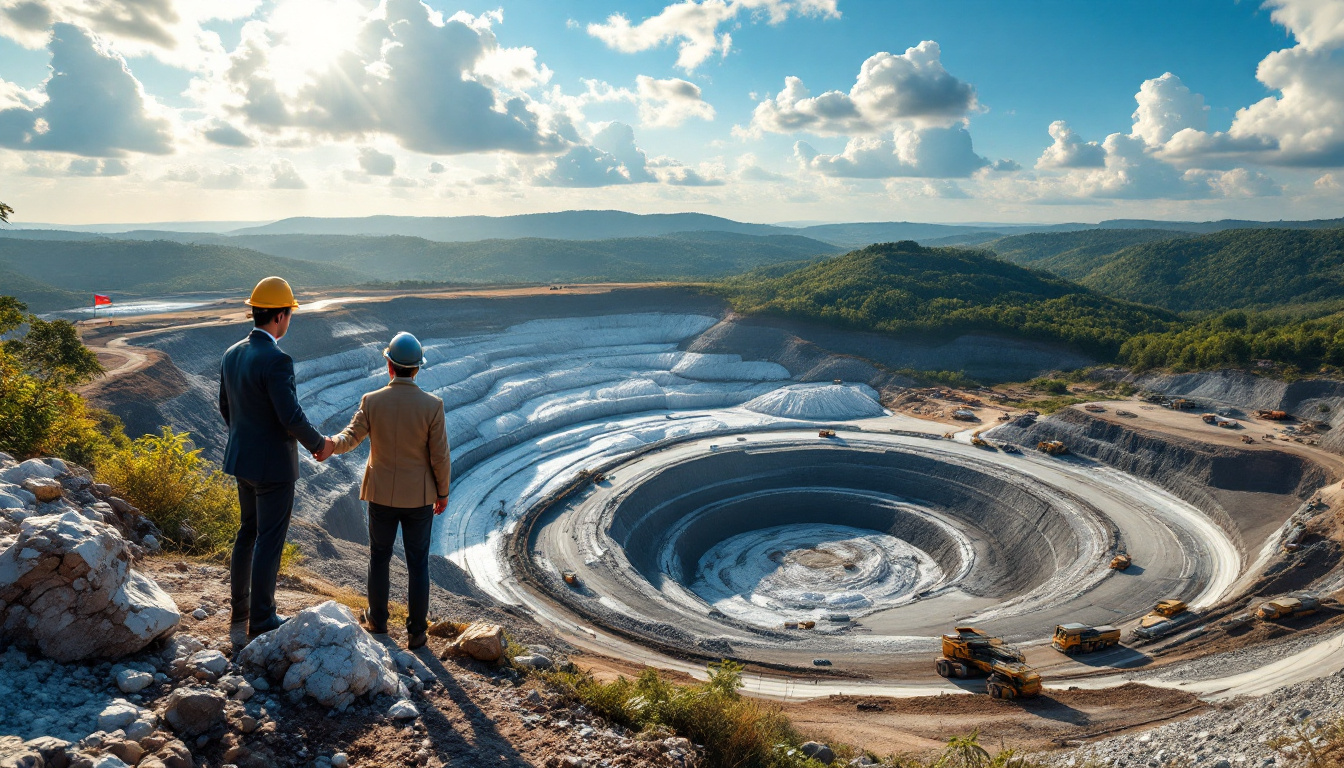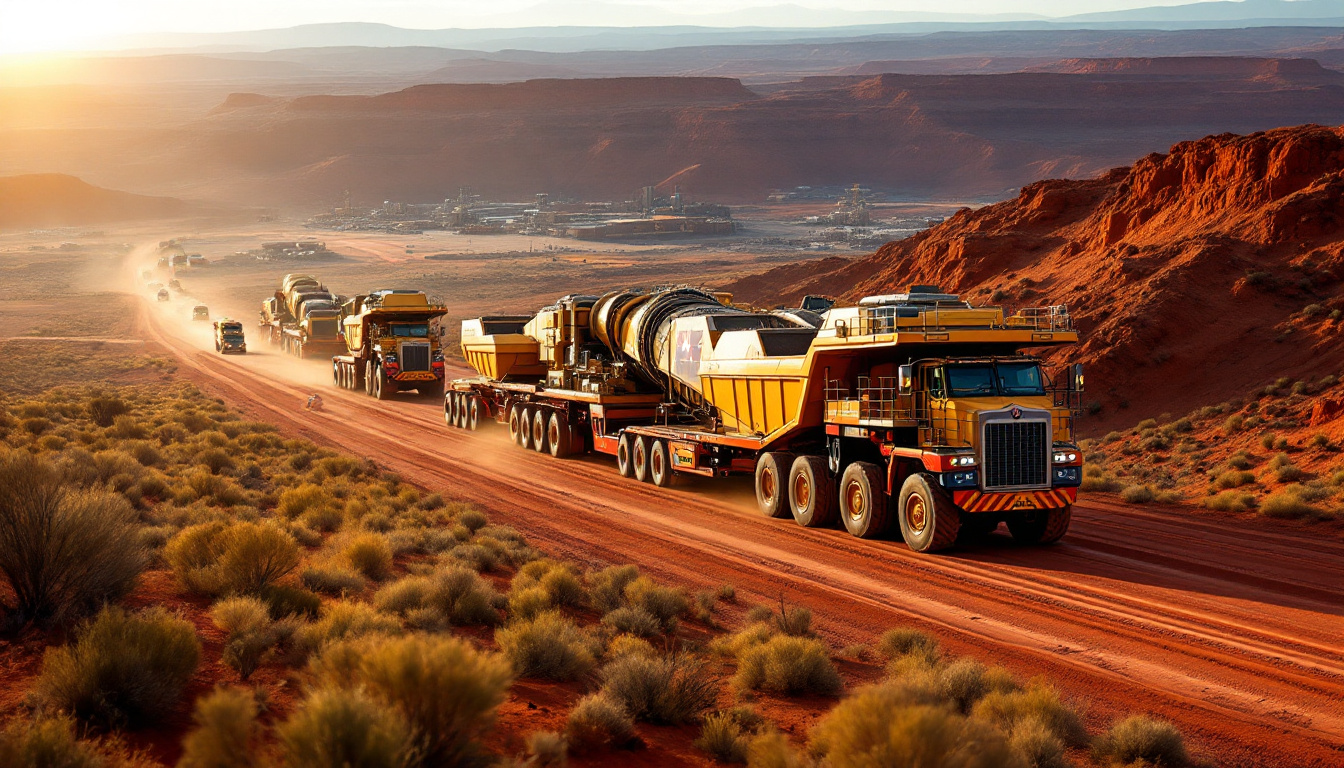Europe's Strategic Metals Projects: Building the Foundation for Tomorrow
Europe is taking decisive steps to secure its metals future with a comprehensive strategy that spans mining, processing, and recycling. The European Commission has identified 47 strategic projects that will help reduce import dependence, particularly from China, across the critical minerals spectrum. These projects qualify for fast-track permitting, with mines capped at 27 months for approval and processing facilities at just 15 months.
Spanning 13 member states, the initiatives address the entire supply chain, with particular emphasis on battery materials critical to the green transition—lithium, cobalt, nickel, graphite, and manganese. Industry analysts predict these projects will significantly help the EU meet its ambitious 2030 domestic production benchmarks for lithium and cobalt.
"The EU's new strategic projects designation has fundamentally changed the investment landscape for critical metals in Europe," notes Bernd Schmidt, metals analyst at Deutsche Rohstoffagentur. "Projects that might have taken a decade to permit can now potentially move forward in under three years."
One standout initiative is METLEN's gallium project in Greece, which aims to cover the EU's entire gallium needs by 2028—a critical development given China's recent export restrictions on this semiconductor essential. Beyond EU borders, 46 additional applications for strategic projects are under consideration, highlighting Europe's global approach to securing supply chains.
The Crisis Engulfing Europe's Traditional Metals Sector
While building for the future, Europe's established metals industry faces an existential threat. The sector is experiencing a long-term decline that has accelerated dramatically due to Chinese overcapacity flooding global markets and persistently high energy costs across the continent.
EU steel production has fallen precipitously, from 160 million metric tons in 2017 to just 126 million in 2023. Even more alarming is the current capacity utilization rate of only 65%—well below the 80% threshold generally considered necessary for financial sustainability.
The aluminum industry has fared even worse. A significant portion of Europe's primary aluminum production capacity has been permanently lost, while approximately half of the remaining capacity has sat idle since 2021. The numbers tell a stark story: European primary aluminum production has declined by 27.5% since 2021, according to industry data.
The energy crisis triggered by Russia's invasion of Ukraine in 2022 dealt a severe blow, with power prices surging to unprecedented levels. Although energy costs have moderated somewhat, they remain significantly higher than historical averages and substantially above what competitors pay in the United States and other regions.
"We're dealing with a structural competitiveness crisis," explains Maria Fernandez, Chief Economist at European Steel Association (EUROFER). "Even with recent energy price declines, European producers are paying 2-3 times what their American counterparts pay per megawatt-hour. That's simply unsustainable for energy-intensive industries like ours."
US Tariffs: A New Threat to European Metal Production
Adding to Europe's metals woes, how Trump-era tariff policies are reshaping global commodity markets presents a significant risk of metal diversion to Europe—essentially creating a dumping ground for materials that can no longer profitably enter the American market.
Industry insiders report that US copper tariffs are also under active consideration and could be implemented within weeks. In response, the European Commission is rapidly gathering evidence to justify safeguard measures on aluminum imports, while steel import quotas could be tightened as early as next month.
One measure under serious consideration is the implementation of a "melted and poured" rule that would target the original producers of metal rather than merely the last country of processing—addressing a key loophole in existing trade defenses.
Paul Voss, Director General of European Aluminium, has called for "immediate, targeted interventions" to prevent further damage to the industry. "We're already operating on the edge of viability," Voss warns. "Without swift action, we face the very real prospect of becoming entirely dependent on imports for materials fundamental to both our green transition and national security."
The Scrap Metal Dilemma: Europe's Recycling Resources at Risk
A less visible but equally concerning aspect of europe's future metals strategy and current crisis involves scrap metal flows. While US tariffs don't apply to scrap metal movements, this creates a dangerous dynamic where valuable recycling resources are leaving European shores at record rates.
EU aluminum scrap exports reached an unprecedented 1.3 million tons in 2023, and industry experts predict these numbers could climb even higher. The mechanics are straightforward: more scrap is likely to flow to the US where processors can remelt it and benefit from the tariff premium on finished products, while avoiding the tariffs that would apply to primary metal.
"What we're seeing is an acceleration of a troubling trend," explains Dr. Klaus Mueller, head of the European Metal Recycling Association. "Scrap is effectively Europe's urban mine—our most accessible and environmentally friendly source of metals. Yet we're exporting this strategic resource while simultaneously complaining about import dependence."
Copper recyclers have expressed similar concerns about outflows of their materials. In response, the European Commission is promising trade measures by Q3 2024 specifically designed to keep scrap in the EU, potentially including reciprocal measures against countries applying metals tariffs or blocking their own scrap exports.
The implications extend beyond Europe, as global scrap trading patterns are likely to be significantly disrupted by growing geopolitical tensions and protectionist measures. China's own restrictions on scrap exports have already tightened global supplies of certain grades.
Tackling the Energy Challenge: Europe's Achilles Heel
At the core of europe's future metals strategy and current crisis lies the persistent problem of high energy costs. The Commission's recently published "Action Plan" explicitly identifies elevated power prices as the fundamental challenge facing energy-intensive industries across the continent.
The plan proposes several solutions, including facilitating more long-term power supply contracts between industrial users and electricity providers, improving network efficiency to reduce transmission costs, and accelerating permitting for renewable grid capacity specifically dedicated to industrial use.
Member states are being strongly urged to implement existing flexibilities in state aid rules to lower costs for energy-intensive industries. However, industry leaders remain skeptical about whether these measures will be sufficient to close the substantial cost gap with international competitors.
"The electricity price disparity isn't just a passing challenge—it's become structural," notes Henrik Berg, CEO of Norse Metals, a mid-sized aluminum producer. "European producers now pay between €70-90 per MWh compared to the €35-45 range in the United States. That €30-50 differential per megawatt-hour translates directly to a €600-1,000 cost disadvantage per ton of aluminum produced."
The Commission has calculated that closing even half this gap would require approximately €15 billion in annual support across all energy-intensive industries—a figure that raises questions about fiscal capacity and political willingness to sustain such levels of intervention.
The Path Forward: Balancing Protection and Investment
The European Union finds itself playing catch-up with the United States, which has moved aggressively to incentivize critical minerals investment through the Inflation Reduction Act. While the Commission increasingly recognizes the urgency of both building future capacity and protecting existing industry, translating this recognition into effective action remains challenging.
Industry groups emphasize that action must extend beyond strategy documents. The EU's complex 27-member decision-making process makes rapid, coordinated policy implementation inherently difficult—a stark contrast to the more centralized approaches in competing regions.
Success will require a delicate balance between protectionist measures to shield existing production and strategic investments to build future capacity. As European Aluminium's Paul Voss bluntly warns, "Strategy documents alone won't keep our operations running."
The stakes couldn't be higher. As Maroš Šefčovič, Vice President of the European Commission, recently noted: "Without a viable metals industry, there simply is no green transition and no strategic autonomy. Every solar panel, wind turbine, and electric vehicle requires these materials. We cannot claim to be serious about either climate goals or industrial sovereignty while allowing these sectors to collapse."
Europe's approach to the metals industry must also consider mining's crucial and paradoxical role in the clean energy transition, creating additional complexity for policymakers balancing environmental concerns with resource security.
European Metals Strategy: Critical Questions Answered
What critical minerals is Europe prioritizing?
Europe is focusing primarily on battery materials including lithium, cobalt, nickel, graphite, and manganese—all essential components for electric vehicle production. Additionally, the strategy includes specialized metals like gallium, germanium, and tungsten that face acute supply risks due to Chinese export restrictions.
How quickly can new mining projects be approved?
Under the new Critical Raw Materials Act, strategic projects qualify for fast-track permitting with strict maximum timelines: 27 months for mine projects and 15 months for processing facilities. This represents a dramatic acceleration from the previous average of 10-15 years for mine permitting in many European countries.
What is causing the decline in European steel and aluminum production?
The decline stems from a perfect storm of challenges: Chinese overcapacity creating global price pressure, persistently high European energy prices (particularly since Russia's invasion of Ukraine), and increasingly, the threat of diverted imports due to US tariffs and other trade barriers.
How is Europe responding to US metal tariffs?
The European Commission is considering multiple defensive measures, including tighter import quotas, safeguard mechanisms, and specialized rules like the "melted and poured" requirement to prevent circumvention. These measures aim to prevent Europe from becoming a dumping ground for metals that can no longer profitably enter the US market.
What is the "scrap wars" issue?
The "scrap wars" refer to intensifying global competition for valuable recyclable metal materials. US tariffs on primary metals (but not scrap) create powerful incentives to process scrap in America rather than Europe. This threatens to drain Europe of valuable recycling resources at precisely the moment when exploring Europe's battery recycling revolution has become an essential component of resource security.
As Europe navigates these complex challenges, its success will determine not only the continent's industrial competitiveness but also its ability to achieve climate objectives and strategic autonomy in an increasingly fragmented global economy. Furthermore, understanding the critical minerals race amid resource nationalism and global tensions is crucial for contextualizing europe's future metals strategy and current crisis within broader geopolitical trends.
Looking ahead, industry experts have developed various mining and finance industry predictions for 2025 that suggest European metals strategy will remain a critical focal point for investors and policymakers alike in the coming years.
Looking for Market-Moving Mineral Discoveries?
Don't miss the next significant ASX mineral discovery that could transform your portfolio. Get instant alerts powered by Discovery Alert's proprietary Discovery IQ model and explore how historic discoveries have generated substantial returns by visiting the dedicated discoveries page.




